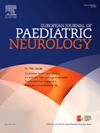Transition of patients with Duchenne muscular dystrophy from paediatric to adult care: An international Delphi consensus study
IF 2.3
3区 医学
Q3 CLINICAL NEUROLOGY
引用次数: 0
Abstract
Background
Duchenne muscular dystrophy (DMD) is a rare neuromuscular disorder characterized by a progressive decline in muscle function, leading to loss of ambulation, respiratory and cardiac failure, and ultimately death. Improvements in DMD management have increased patient life expectancy; therefore, there is a growing requirement for patients to transfer from paediatric to adult care services. There is also a need for clear recommendations to guide this process.
Aim
To establish international consensus guidelines regarding best practices for transitioning patients with DMD from paediatric to adult care and ensuring continuity of treatment.
Methods
Consensus statements were developed using the Delphi process and scored using the Grading of Recommendations Assessment, Development and Evaluation (GRADE) system. The initiative was led by a steering committee (one non-voting chair and two voting members) who recruited 15 expert panellists to form the consensus group. Following an initial systematic literature search, the consensus group voted in three voting rounds. Round 1 (free-text responses to questions) and Round 2 (importance ranking of statements) were completed using an online survey. Round 3 (voting on final consensus statements) took place during a virtual consensus meeting.
Consensus statements
Consensus was reached on 48 statements covering the topics of transition planning, the transition process, post-transfer management, communicating with young people with DMD and supporting them with the transition to adult life.
Conclusion
These consensus statements provide guidelines for improving transition practices for young people with DMD and promoting continued care at a comparable standard in adulthood.
杜兴氏肌肉萎缩症患者从儿科护理向成人护理的过渡:国际德尔菲共识研究。
背景:杜氏肌营养不良症(DMD)是一种罕见的神经肌肉疾病,其特征是肌肉功能进行性下降,导致行动能力丧失、呼吸和心力衰竭,最终导致死亡。DMD管理的改善提高了患者的预期寿命;因此,越来越多的病人需要从儿科转到成人护理服务。还需要提出明确的建议来指导这一进程。目的:建立关于将DMD患者从儿科过渡到成人护理并确保治疗连续性的最佳实践的国际共识指南。方法:采用德尔菲法制定共识声明,并采用分级建议评估、发展和评价(GRADE)系统进行评分。该倡议由一个指导委员会(一名无投票权的主席和两名有投票权的成员)领导,该委员会招募了15名专家小组成员组成共识小组。经过初步系统的文献检索,共识组进行了三轮投票。第一轮(对问题的自由文本回答)和第二轮(对陈述的重要性排序)通过在线调查完成。第三轮(对最终共识声明进行投票)在虚拟共识会议期间进行。协商一致声明:就48项声明达成了协商一致意见,这些声明涵盖了以下主题:过渡规划、过渡进程、转职后管理、与患有DMD的年轻人沟通以及支持他们过渡到成人生活。结论:这些共识声明为改善青年DMD患者的过渡实践和促进成年期以可比标准继续护理提供了指导。
本文章由计算机程序翻译,如有差异,请以英文原文为准。
求助全文
约1分钟内获得全文
求助全文
来源期刊
CiteScore
6.30
自引率
3.20%
发文量
115
审稿时长
81 days
期刊介绍:
The European Journal of Paediatric Neurology is the Official Journal of the European Paediatric Neurology Society, successor to the long-established European Federation of Child Neurology Societies.
Under the guidance of a prestigious International editorial board, this multi-disciplinary journal publishes exciting clinical and experimental research in this rapidly expanding field. High quality papers written by leading experts encompass all the major diseases including epilepsy, movement disorders, neuromuscular disorders, neurodegenerative disorders and intellectual disability.
Other exciting highlights include articles on brain imaging and neonatal neurology, and the publication of regularly updated tables relating to the main groups of disorders.

 求助内容:
求助内容: 应助结果提醒方式:
应助结果提醒方式:


